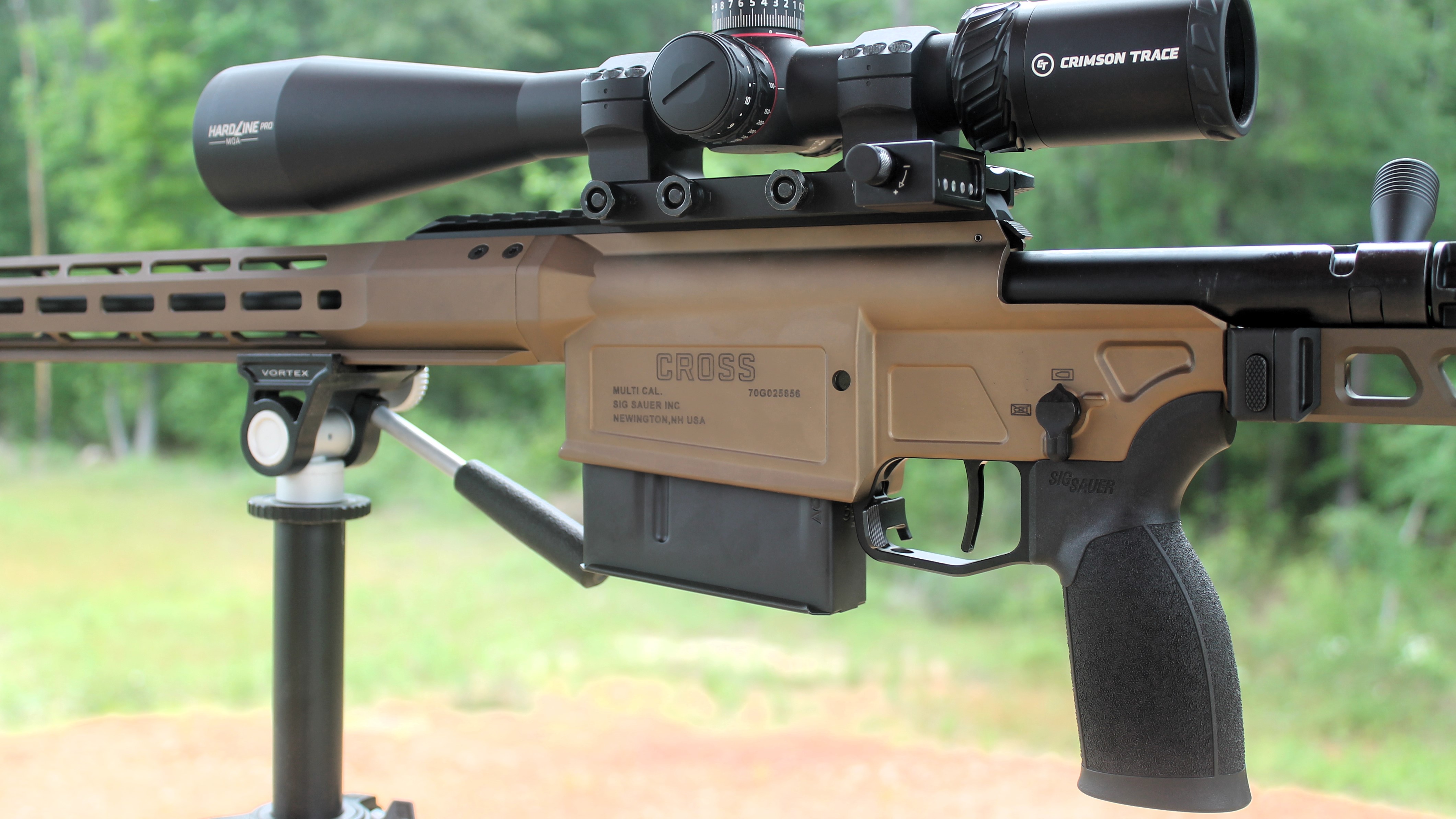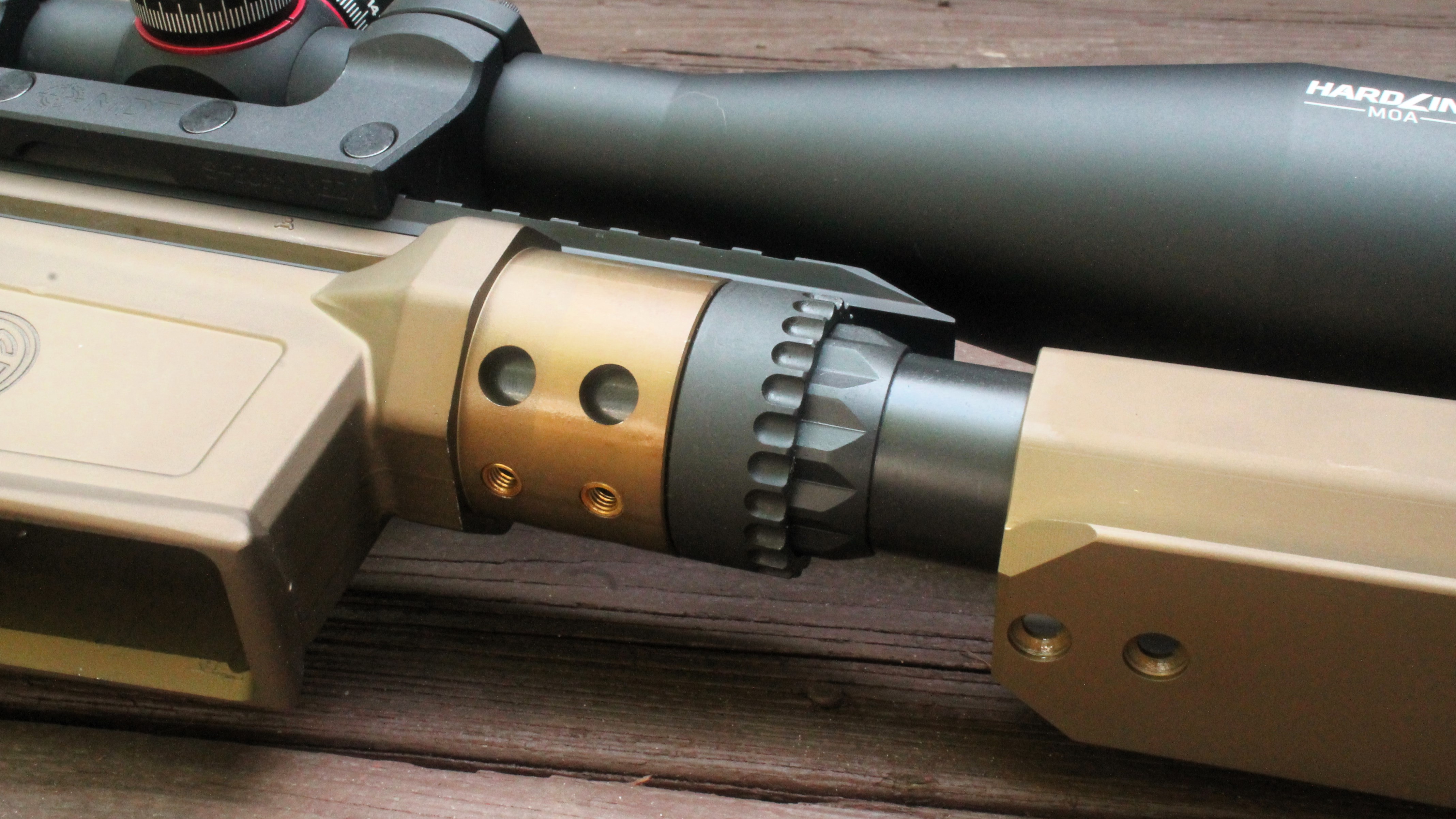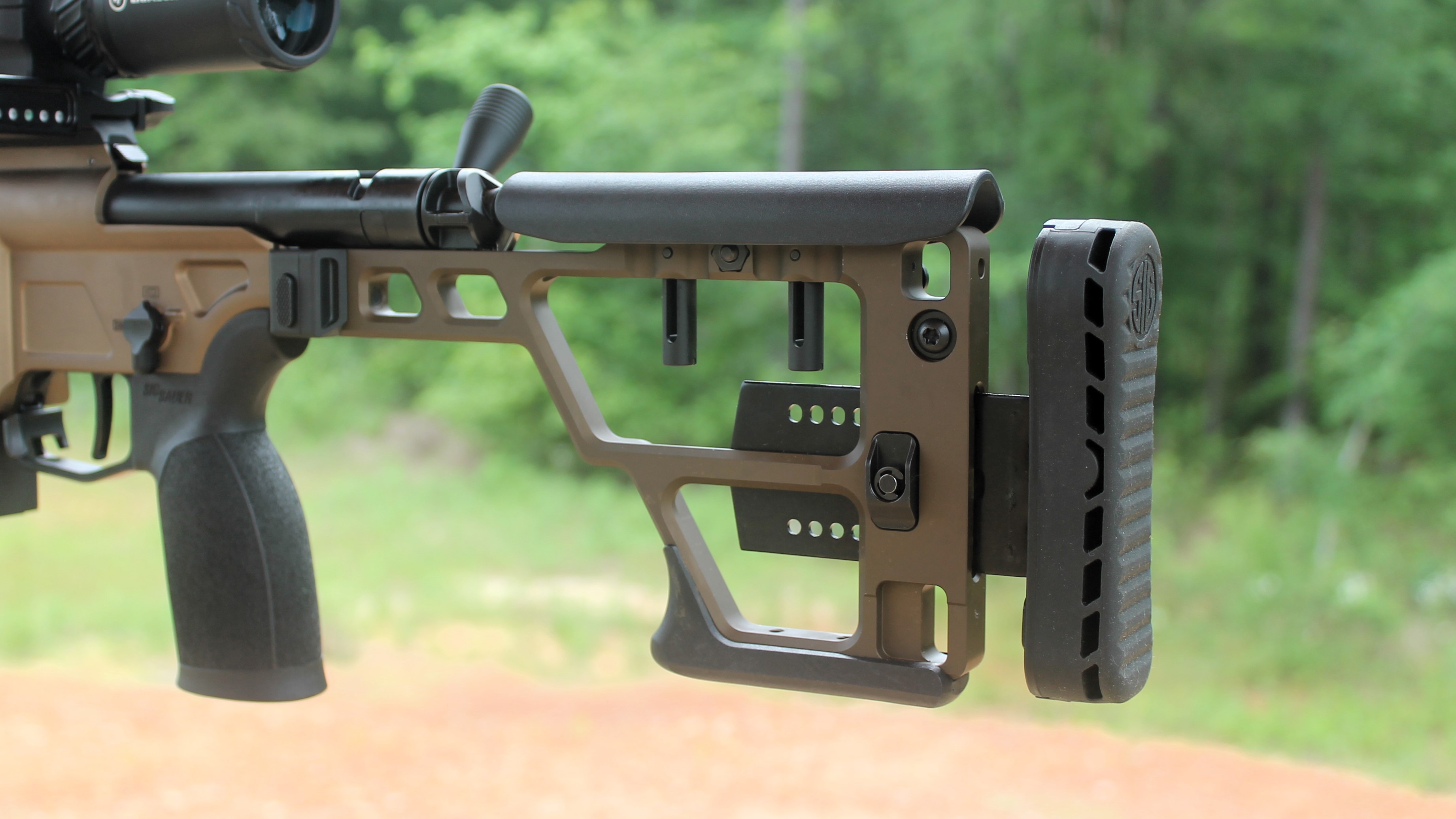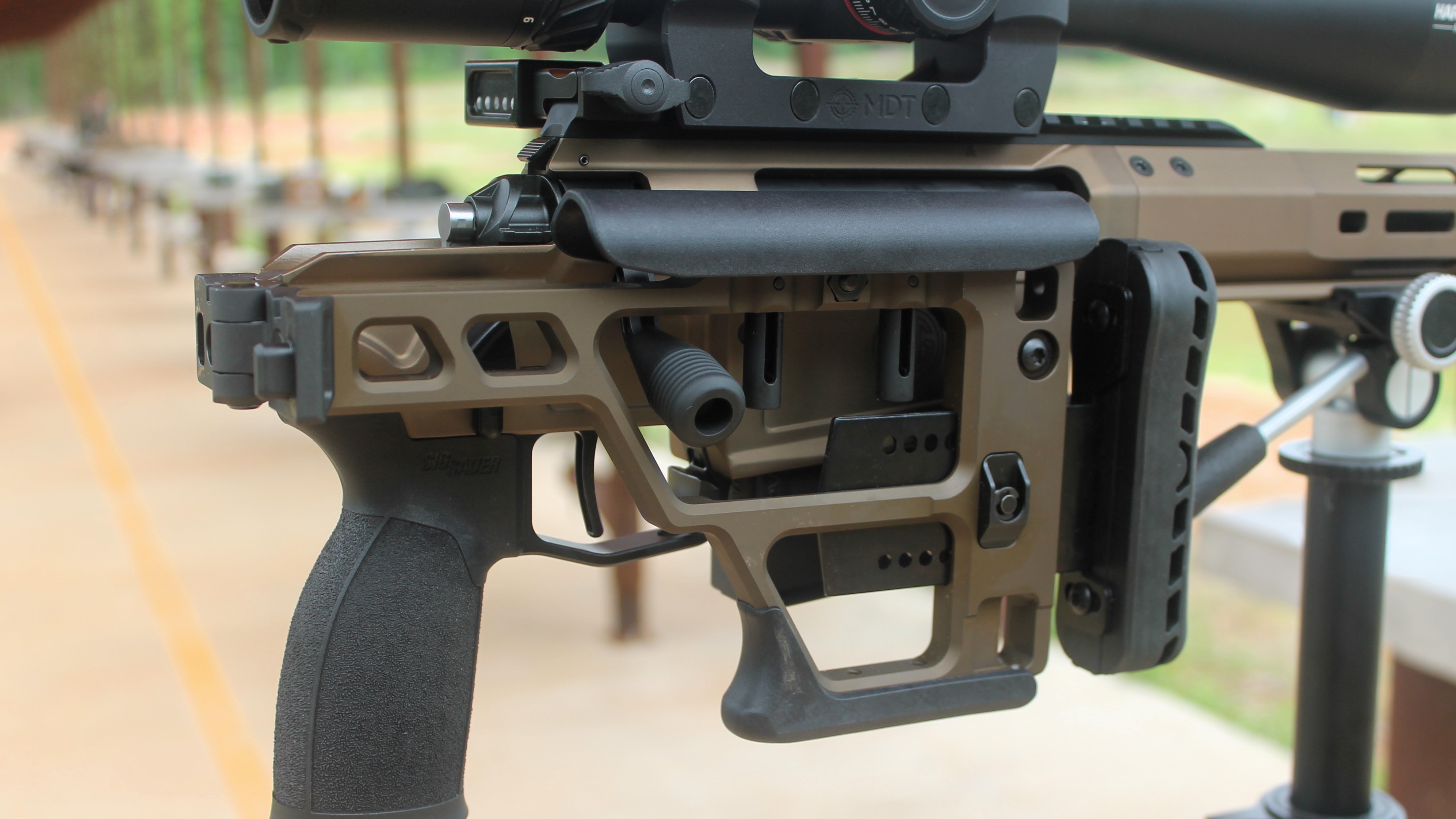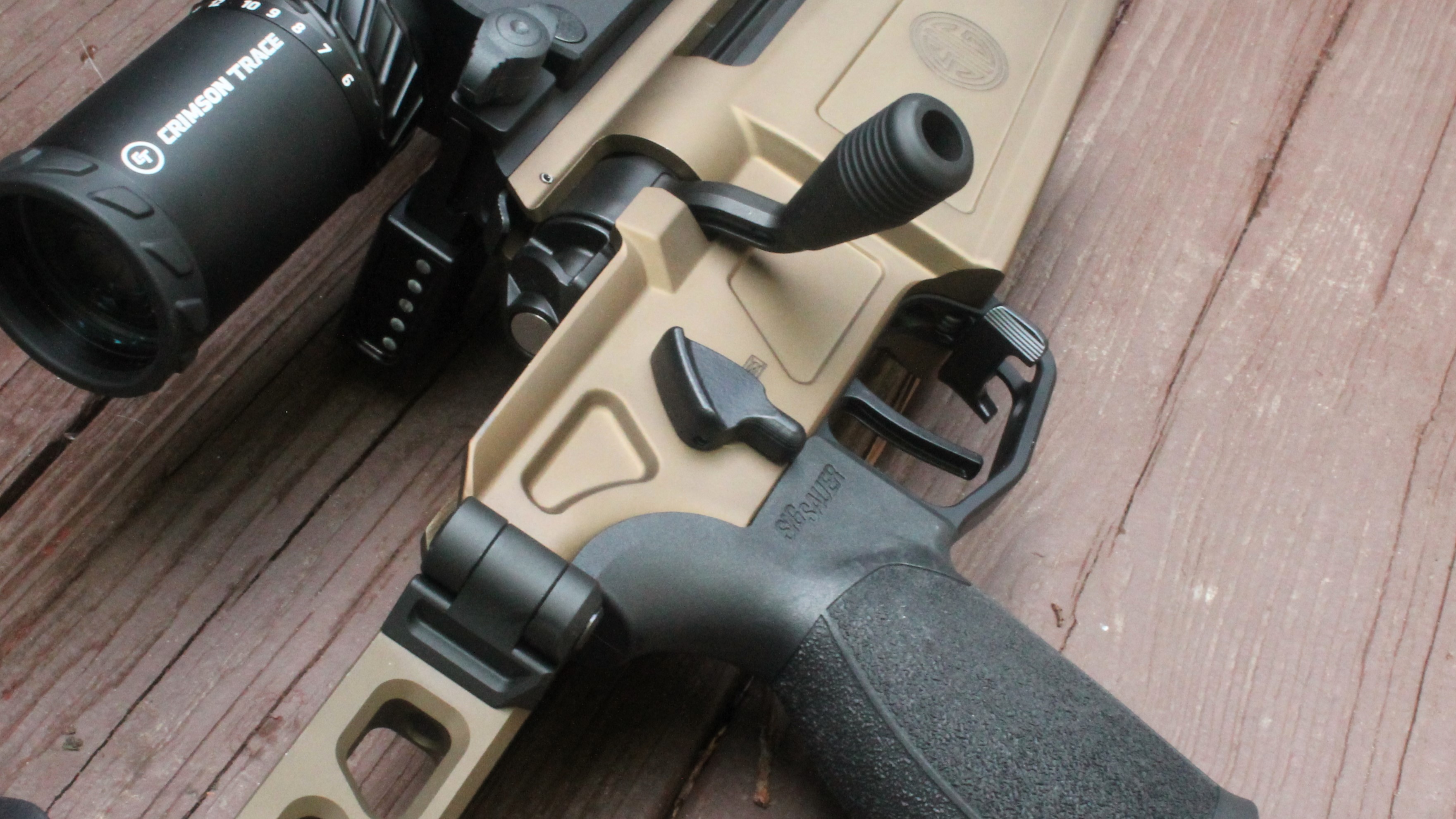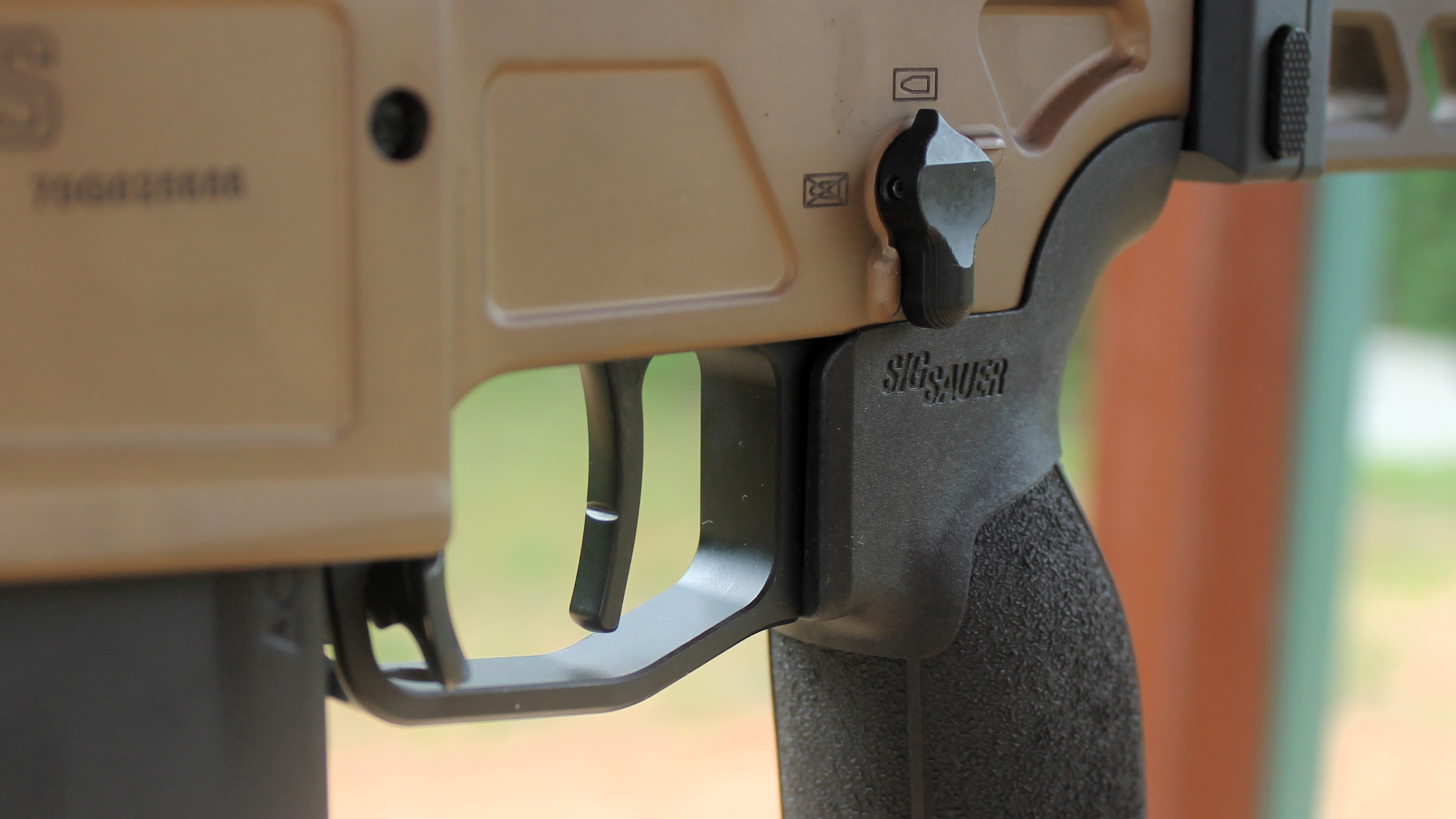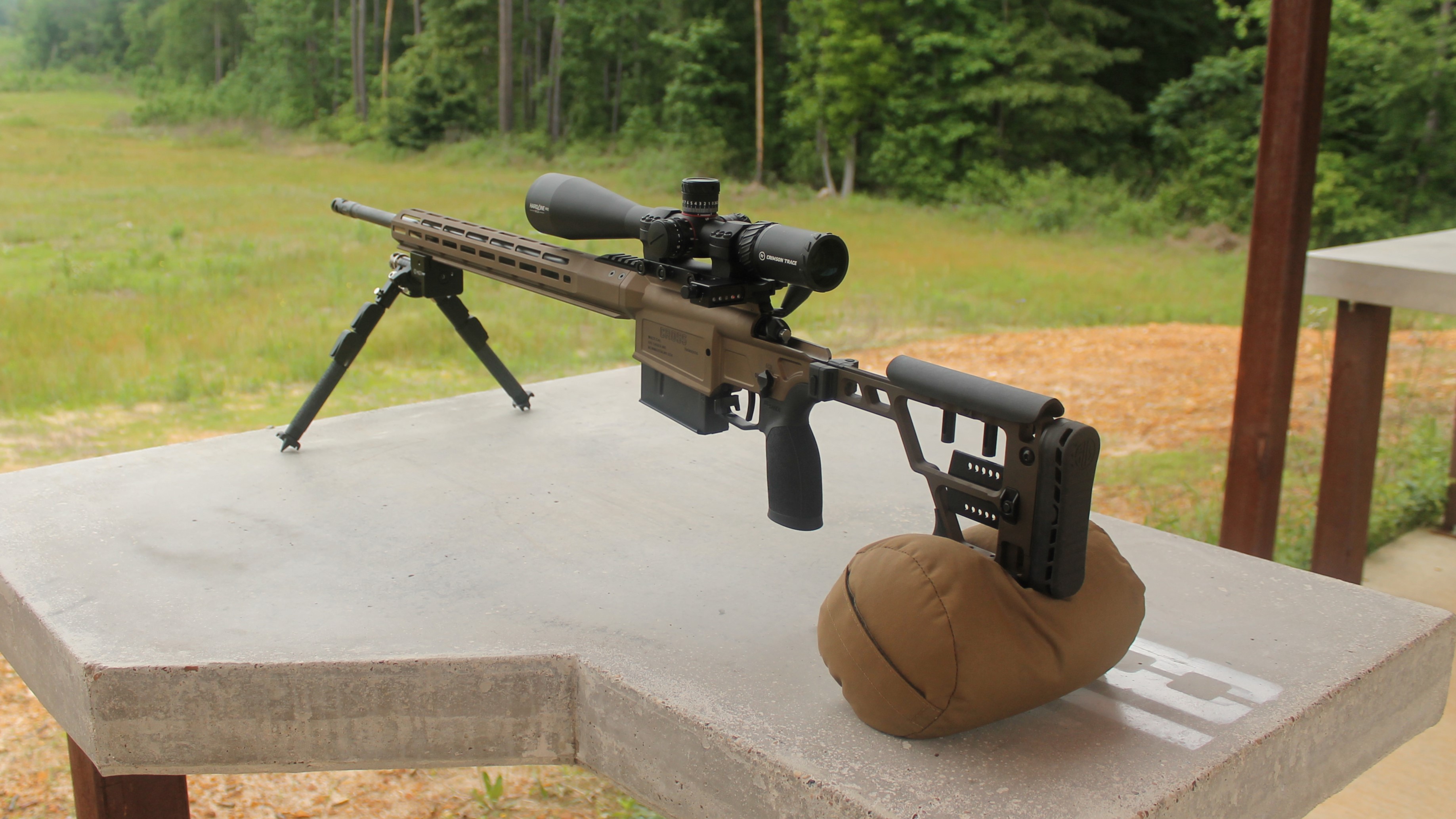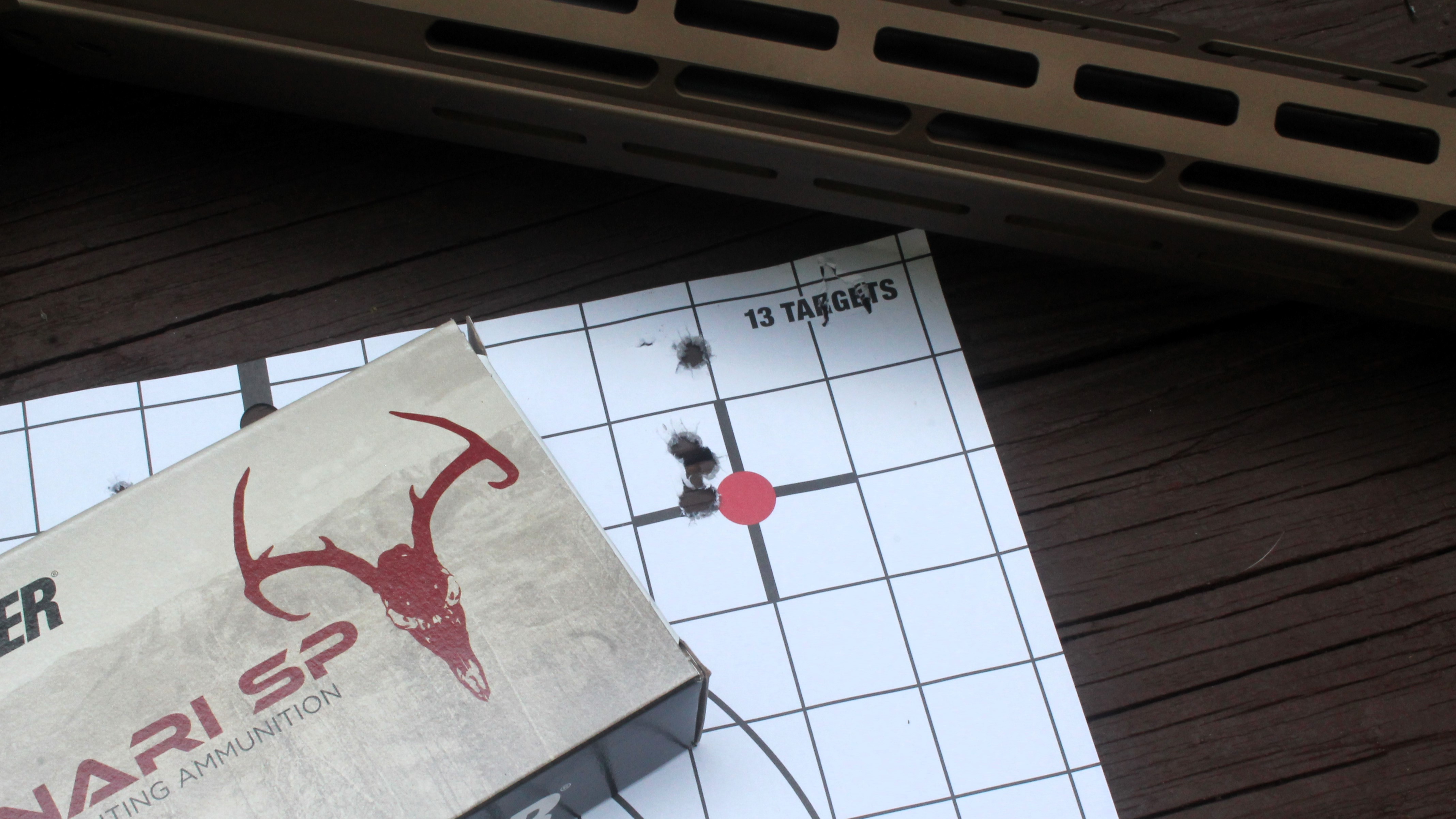Read enough gun reviews and you’re sure to see a rifle design described as “thoughtful.” The term is probably overused, but I think it fits Sig Sauer’s new rifle: the CROSS Magnum.
Sig’s engineers designed the CROSS Magnum with an actual human hunter in mind. The rifle is chock full of small features that make it easier to shoot, more convenient to use, and more deadly in the field. That’s usually what writers of my ilk mean when they say a rifle design is “thoughtful,” and I can’t think of a better descriptor of Sig’s new offering.
Specs and Features
- Caliber: .300 Win Mag
- Barrel Length (in): 24
- Magazine: (1) 6rd Steel Mag
- Mag Type: AICS
- Action: Bolt
- Stock: SIG Precision Stock
- Barrel Material: Stainless Steel
- Trigger Type: 2-Stage Match (Adjustable)
- Barrel Twist: 1:9
- Receiver Finish: Anodized
- Overall Length: 45.2 in
- Folded Length: 36 in
- Muzzle Thread Pitch: 5/8 in – 24
- Accessory Rail: M-LOK
- Overall Weight: 8.9 lb W/MAGAZINE
- MSRP: $2,500
Why a Magnum?
The knock on Sig’s first iteration of the CROSS rifle was that the 16- and 18-inch barrels don’t squeeze enough velocity out of the .308 Win., 6.5 Creedmoor, and 277 Fury cartridges. Cutting the barrel length trimmed weight and made the rifle more portable with a suppressor, but it also reduced the maximum range of these cartridges (especially the 6.5 Creedmoor). That’s fine for most common hunting distances, but if you wanted a CROSS that could really reach out there, you were forced to swap in an aftermarket barrel.
The CROSS Magnum has no such limitations: the 24-inch barrel produces exactly the velocities you expect from a .300 Win. Mag. As you can see from the chart below, 180-grain bullets averaged a hair above 3,000 feet-per-second (fps) while 190-grain pills flew about 2,800 fps at the muzzle.
The rifle’s 24-inch barrel maximizes the .300 Win. Mag.’s performance, but it doesn’t increase the overall weight of the rifle beyond what’s reasonable for a hunting rig. At 8.9 pounds with an empty magazine, it isn’t what I’d call lightweight, but adding a hunting scope and bipod puts the completed setup in the 11-pound range. That’s doable for most hunts, and even a backcountry trip would be manageable with a good rifle sling.
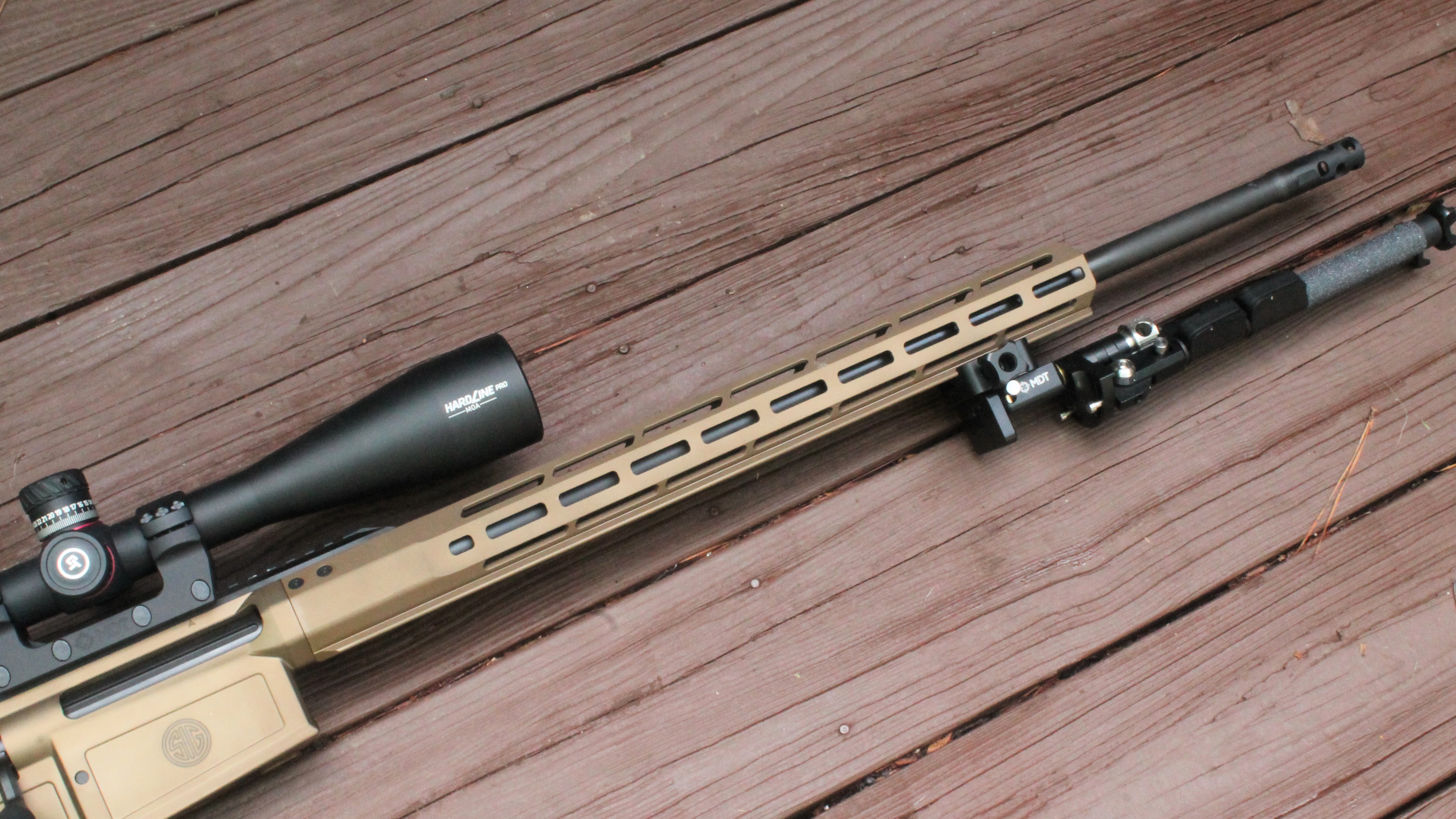
The rifle’s nine-pound frame also offers an advantage. Namely, recoil mitigation. I’m not shy about admitting that I don’t love bringing a big magnum rifle to the range, especially for the amount of shooting required to do accuracy testing. A day spent shooting a big bore rifle can leave you with a sore shoulder and an aching head, but lots of practice is the only way to get competent with your setup.
I had to double up on ear protection shooting the Sig CROSS, but I was pleasantly surprised by the amount of felt recoil. The muzzle brake helps considerably, and the gun’s weight does a nice job absorbing those Win. Mag. loads. It’s still tough to see your hits, but I went home without the usual complaints.
This is one of the things I like about the new CROSS. It strikes a nice balance between the “lightweight mountain rifle” model and the too-heavy-for-the-field benchrest rifle. Lighter-recoiling rifles can get away with being lighter overall, but for magnum rifles I think it’s good to have a bit more heft.
Flexible Design
The rifle’s reasonable weight is due in part to the CROSS Magnum’s one-piece aluminum receiver. The CROSS takes its cues from AR-platform rifles, but it combines the AR-15’s upper and lower receivers into a single receiver. This shaves off a few ounces and makes the rifle sleeker and more compact.
The one-piece receiver provides strength looks great.
The receiver also allows for quick barrel swaps. If you ever decide that a different barrel would better suit your needs, it’s easy to remove the barrel nut and swap barrels, much like you would with an AR-15. Several companies offer aftermarket barrels for the original short-action CROSS, and I wouldn’t be surprised to see the same for the Magnum in short order.
You can change calibers with a barrel swap, but you’re limited to cartridges whose case uses the same bolt face as the .300 Win. Mag. Fortunately, the CROSS Magnum bolt body can be disassembled without tools, which makes it easy to swap bolt faces and accommodate a wider range of cartridges. I haven’t seen any other companies offer CROSS bolt head assemblies (yet), but Sig already sells the standalone part. Given the company’s larger focus on modularity, I can see them offering bolt heads for other cartridges at some point down the line.
The AR-style barrel nut can be removed to swap barrels.

Thoughtful Features
That modularity doesn’t stop with the rifle’s action. The rifle also features a fully adjustable buttstock system that can tune comb height and length of pull. In addition, taking its cues from competition rifle setups, the height of the buttpad can be adjusted to accommodate virtually any awkward shooting position in the field. All of these adjustments can be made by hand without tools: comb height is adjusted with a lever and spring system; the LOP can be changed using a knob; and the buttpad moves along a picatinny-style rail and is fixed with a simple button.
The stock is fully adjustable for comb height, length of pull, and buttpad height.
Of course, the most obvious feature of the stock is its ability to fold along the side of the rifle. I’ve used quite a few folding stocks, and this is one of my favorites. It captures the bolt handle and reduces the overall length of the rifle to a mere 36 inches. But it’s also remarkably simple. Rather than require multiple buttons to be pushed or the hinge to be lifted and pulled, this system features a single release button. When it needs to be unfolded, users simply pull it back out and it snaps in place. Easy.
The stock can also be folded, which cuts the overall length by about 9 inches.
Moving towards the muzzle end of the rifle, the controls and pistol grip are both modeled after the AR-15. This makes operating intuitive for anyone familiar with the AR platform, but it also allows you to swap your favorite AR grip for the one that comes with the CROSS (though I doubt you’ll want to).
What’s more, competitive shooters will notice that the safety selector doubles as a thumb rest. Running a thumb along the side of the rifle (as opposed to wrapping it around the grip) helps avoid torquing the gun and increases practical accuracy. Sig engineers understood this and integrated a thumb rest into the design without having to add another piece of metal to the receiver.
The safety selector doubles as a thumb rest.
Finally, the handguard is worth a mention. It’s free-floated and runs about two-thirds of the way down the barrel. A picatinny rail runs all the way along the top, and M-Lok slots cover every other side. The bottom also features a full-length ARCA rail. Photographers have used ARCA systems for a long time, but lately they’ve been adopted by rifle shooters due to their stability and ease of use.
You’ll most often see ARCA attachments on bipods and tripods. This allows any piece of gear–binos, spotting scopes, or rifles–to be attached to the stabilizer with just a few turns of a knob. Most handguards use M-Lok slots, picatinny rails, or just a sling stud, which requires the user to purchase a separate ARCA rail to take advantage of this system. But the CROSS Magnum’s integrated ARCA rail makes it easy to mount the rifle to a tripod, bipod, or any other stabilizer fitted with an ARCA attachment.
The integrated ARCA rail allows the rifle to be easily mounted to tripods and bipods.
At the Range
Now for the fun part. As I mentioned above, shooting the CROSS Magnum is actually a pleasant experience, which I can’t say about all magnum rifles. Part of that is due to how well the rifle absorbs recoil, but the trigger helps a lot, too.
Range days are the best days.
In a word, the two-stage trigger is excellent. On the rifle I received, the first stage clocks in at 1.5 pounds while the second takes up another pound, for a total of 2.5 pounds. The break is crisp and clean with zero creep or mushiness.
I’ve seen some complain that this trigger is too light for a hunting rifle, and I see where those folks are coming from. But having two stages mitigates some of that risk since the first stage is a clear signal that the second is about to break. Also, the trigger is adjustable. If 2.5 pounds is too light, you can increase that to four pounds using a T15 bit and the external set screw.
The trigger is excellent.
The action is smooth, and the 60-degree throw facilitates quick followup shots. I did have some trouble when the bolt failed to pick up the next cartridge and load it into the chamber. I thought at first I was short-stroking the action–not pulling the bolt far enough back to clear the rear of the next cartridge. That may have been the case once or twice, but I also noticed that sometimes the next round was canted back in the magazine, out of reach of the bolt face.
This may have been due to a faulty magazine or faulty loading on my part–but it happened enough times to warrant a mention, if for no other reason than to warn would-be users to load their magazines carefully.
I broke in the barrel with a few rounds of shooting and cleaning, then started accuracy testing. I started by shooting a five-shot, cold-bore group. This is to test how the rifle shoots if the bore is left to cool completely between each shot. I think this is an important test because it replicates an actual hunting scenario. When you’re out in the field, you won’t be able to warm up the barrel to its sweet spot. The rifle has to make a single shot (hopefully it’s just one shot) on a totally cold bore.
Unlike other rifles I’ve tested, I saw zero difference between the cold bore group and the other groups. None were small enough to blow your socks off, but that’s the kind of consistency I like to see in a hunting rifle.
I also saw very little difference between how the rifle shoots match-grade and hunting ammo. The match ammo posted a slightly smaller average, but the soft-point hunting ammo performed nearly as well. Again: two thumbs up for consistency.
Accuracy testing was conducted from 100 yards.
| Ammo | 180-grain Venari Soft Point | 190-grain OTM Match |
|---|---|---|
| Average Group (in) | 1.55 | 1.43 |
| Small Group (in) | 1.4 | 1.2 |
| Average Velocity (fps) | 3069 | 2894 |
A fairly typical group.
For those used to seeing half-inch groups in forums and gun magazines, these results look underwhelming. And I admit, my socks are still on my feet, especially considering this rifle’s MSRP.
Still, there are a few things worth mentioning. First, it’s not uncommon for a factory rifle to be picky about ammo. My experience with accuracy testing has taught me that the same rifle might shoot terrible groups with one bullet and shoot the lights out with another.
Second, and I think this is my one big complaint about the CROSS Magnum, the .300 Win. Mag. isn’t what I would have chosen for dead-nuts accuracy. The old magnum can be accurate, there’s no doubt about that. But for a factory rifle shooting factory ammo, this is about what I’d expect. I don’t know why Sig went with the .300 Win. Mag. when there are more modern, accurate high-powered cartridges to choose from. I suppose the market for the .300 Win. Mag. is larger, as the comment section below is about to prove. But I hope Sig expands their lineup of long-action offerings to include a few of those more accurate options on this platform.
Last Shot
The good news is that the CROSS platform is customizable, at home and out-of-the-box. Aftermarket barrels can solve most accuracy issues and allow users to swap calibers, and those options will only increase as more hunters switch to these and other chassis-style platforms. That’s why I think this rifle is thoughtfully designed–it offers a host of useful features now while maintaining the flexibility to grow and change into the future. If you’re looking for a big boy rifle for your next elk, moose, or bison hunt, the new CROSS Magnum is worth a look.
Read the full article here


